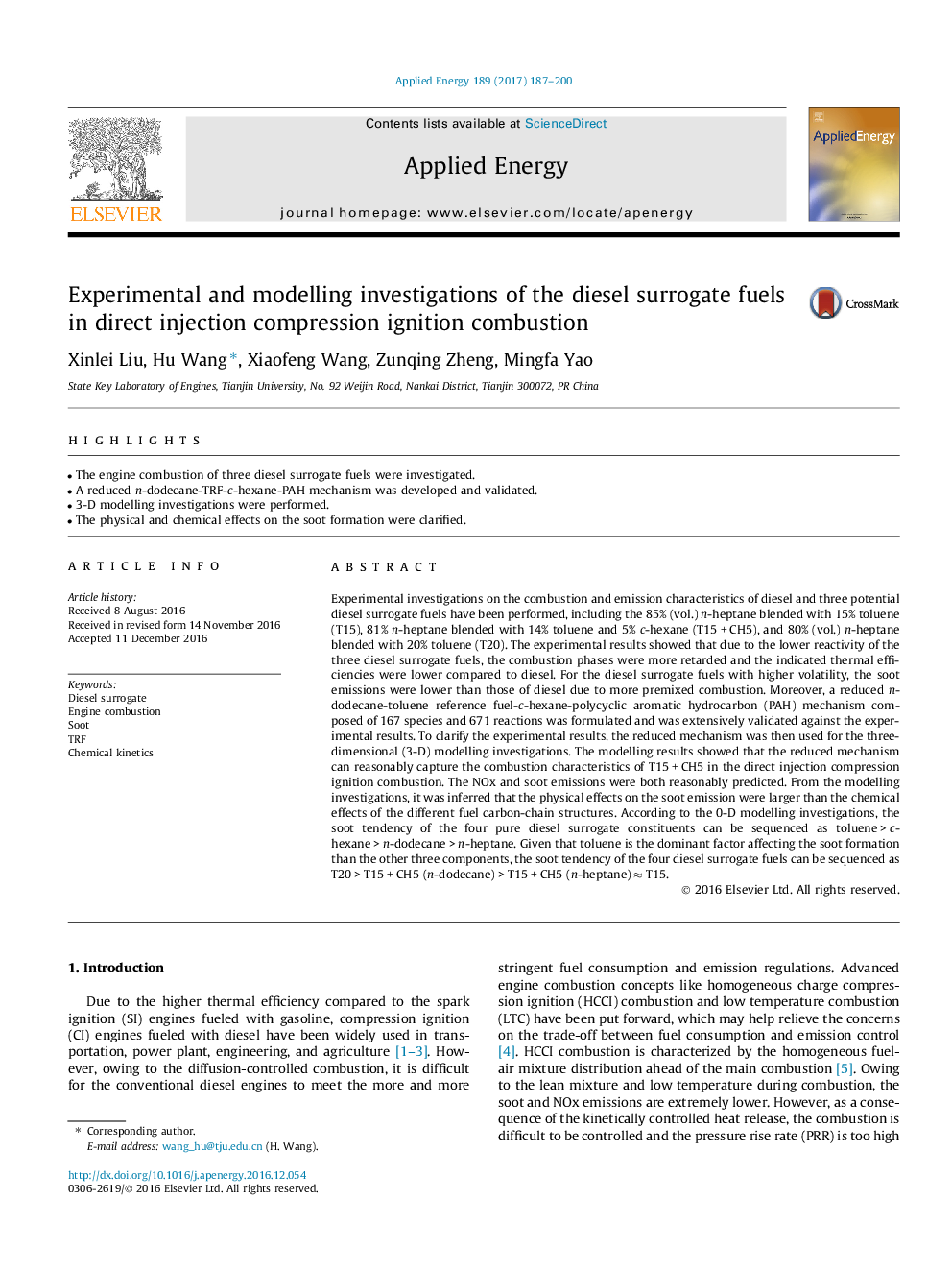| کد مقاله | کد نشریه | سال انتشار | مقاله انگلیسی | نسخه تمام متن |
|---|---|---|---|---|
| 4916746 | 1428101 | 2017 | 14 صفحه PDF | دانلود رایگان |
عنوان انگلیسی مقاله ISI
Experimental and modelling investigations of the diesel surrogate fuels in direct injection compression ignition combustion
ترجمه فارسی عنوان
تحقیقات تجربی و مدل سازی سوخت های جایگزین در احتراق فشرده مستقیم
دانلود مقاله + سفارش ترجمه
دانلود مقاله ISI انگلیسی
رایگان برای ایرانیان
موضوعات مرتبط
مهندسی و علوم پایه
مهندسی انرژی
مهندسی انرژی و فناوری های برق
چکیده انگلیسی
Experimental investigations on the combustion and emission characteristics of diesel and three potential diesel surrogate fuels have been performed, including the 85% (vol.) n-heptane blended with 15% toluene (T15), 81% n-heptane blended with 14% toluene and 5% c-hexane (T15 + CH5), and 80% (vol.) n-heptane blended with 20% toluene (T20). The experimental results showed that due to the lower reactivity of the three diesel surrogate fuels, the combustion phases were more retarded and the indicated thermal efficiencies were lower compared to diesel. For the diesel surrogate fuels with higher volatility, the soot emissions were lower than those of diesel due to more premixed combustion. Moreover, a reduced n-dodecane-toluene reference fuel-c-hexane-polycyclic aromatic hydrocarbon (PAH) mechanism composed of 167 species and 671 reactions was formulated and was extensively validated against the experimental results. To clarify the experimental results, the reduced mechanism was then used for the three-dimensional (3-D) modelling investigations. The modelling results showed that the reduced mechanism can reasonably capture the combustion characteristics of T15 + CH5 in the direct injection compression ignition combustion. The NOx and soot emissions were both reasonably predicted. From the modelling investigations, it was inferred that the physical effects on the soot emission were larger than the chemical effects of the different fuel carbon-chain structures. According to the 0-D modelling investigations, the soot tendency of the four pure diesel surrogate constituents can be sequenced as toluene > c-hexane > n-dodecane > n-heptane. Given that toluene is the dominant factor affecting the soot formation than the other three components, the soot tendency of the four diesel surrogate fuels can be sequenced as T20 > T15 + CH5 (n-dodecane) > T15 + CH5 (n-heptane) â T15.
ناشر
Database: Elsevier - ScienceDirect (ساینس دایرکت)
Journal: Applied Energy - Volume 189, 1 March 2017, Pages 187-200
Journal: Applied Energy - Volume 189, 1 March 2017, Pages 187-200
نویسندگان
Xinlei Liu, Hu Wang, Xiaofeng Wang, Zunqing Zheng, Mingfa Yao,
